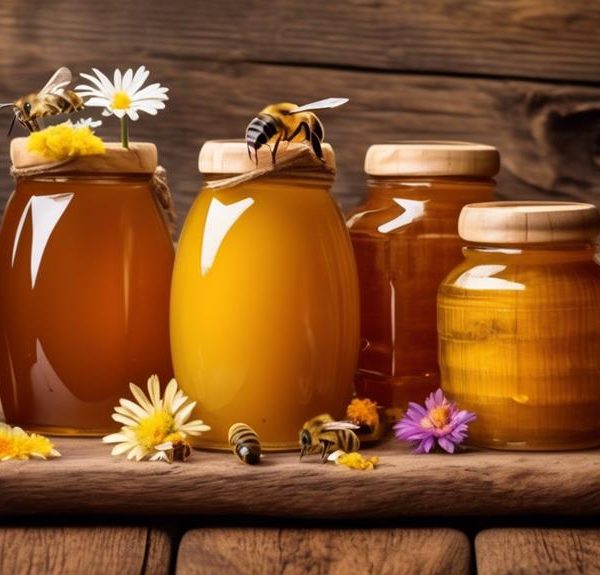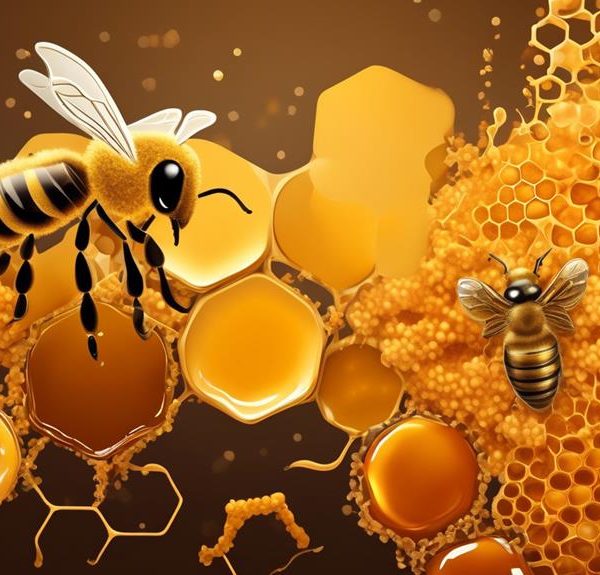Buzz into the fascinating world of honey bees and discover the diverse types that exist globally, each with unique characteristics and roles.

Are There Different Types of Honey Bees
Have you ever wondered if all honey bees are the same? Well, you're not alone in your curiosity. In fact, there are several different types of honey bees across the globe, each with unique characteristics and roles.
From the European honey bee, renowned for its honey production, to the African honey bee, infamous for its aggressive nature, there's a fascinating world of diversity within the honey bee family.
Stick around to explore this intriguing subject further, and you might just uncover some surprising facts about these industrious insects.
Key Takeaways
- Honey bee colonies consist of three main types: queen bees, worker bees, and drones, each with specific roles in the hive ecosystem.
- The European honey bee (Apis mellifera) is crucial for pollination, agriculture, and navigation skills within colonies.
- African honey bees (Apis mellifera scutellata) are known for their aggressive behavior, rapid colony growth, and adaptation to tropical climates.
- Asian honey bees (Apis cerana) thrive in diverse Asian environments, exhibit unique foraging tactics, and have developed defense mechanisms against threats like the Varroa mite.
Understanding the Honey Bee Family
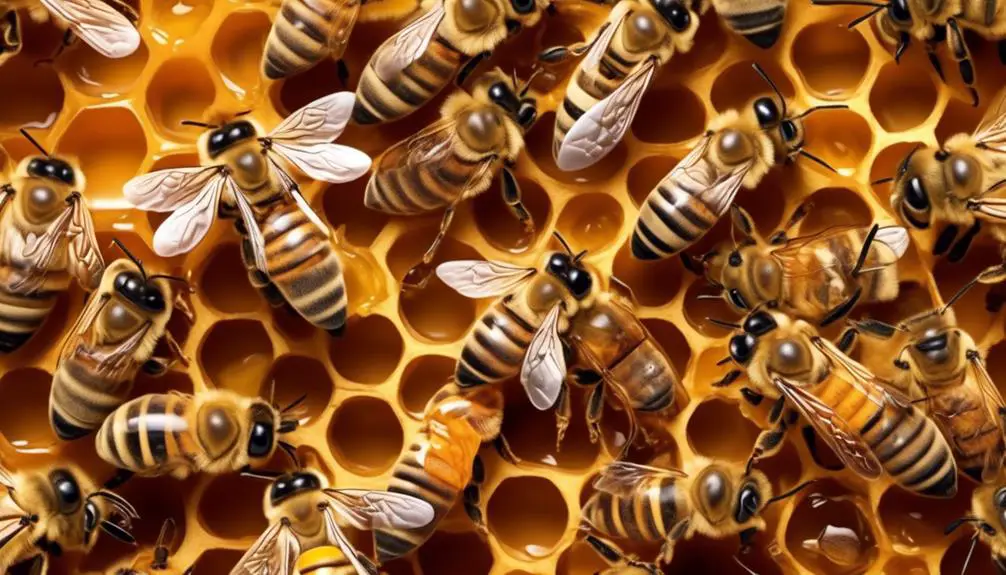
While you may be familiar with the image of a single honey bee, it's crucial to understand that each bee is part of a complex and intricate family structure, each with specific roles and responsibilities in the hive. A typical bee colony consists of three types of bees: the queen, the worker bees, and the drones.
The queen bee, the only sexually mature female in the hive, is responsible for reproduction. She's larger than the other bees and can lay up to 2,000 eggs a day. You'll find her doing nothing else but laying eggs and being taken care of by worker bees.
Worker bees, the majority of the hive, are infertile females. They're the ones you'll see buzzing around flowers, collecting nectar and pollen. But their duties extend beyond foraging. They also clean the hive, feed the larvae, and protect the colony.
Drones, the only males in the hive, have one primary role: to mate with the queen. They're bigger than worker bees but smaller than the queen. After mating, they die, as their purpose has been fulfilled.
Understanding these roles allows for a deeper appreciation of these industrious insects and their crucial role in our ecosystem.
Exploring the European Honey Bee
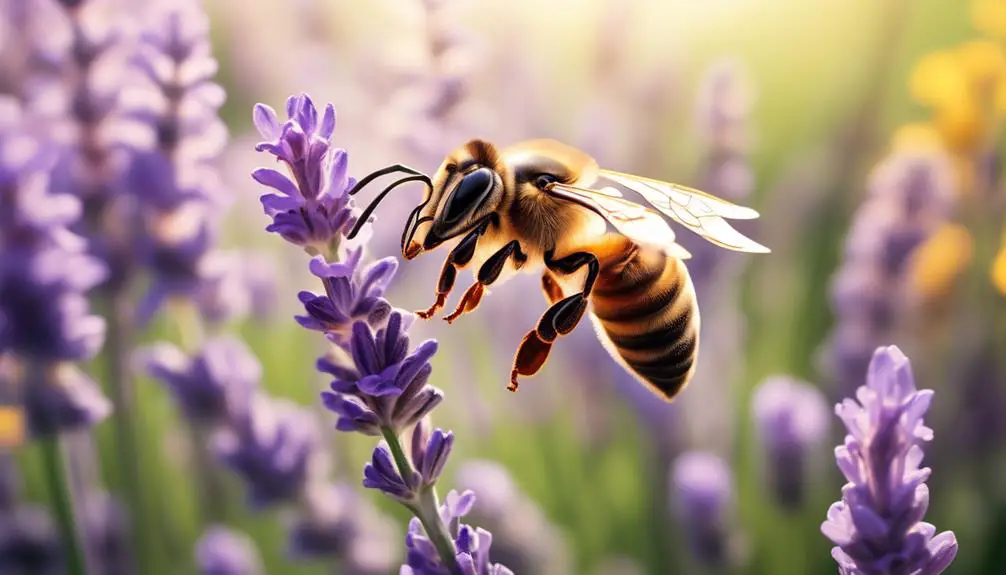
Now, let's delve into the fascinating world of the European honey bee, a species that not only stands out for its pivotal role in pollination but also for its unique characteristics and behaviors. This bee, scientifically known as Apis mellifera, is one of the most common species of honey bee worldwide. It's native to Europe, but humans have introduced it to every continent except Antarctica.
One thing you'll find interesting about these bees is their complex, hierarchical society. They live in colonies that consist of a single queen, hundreds of male drones, and thousands of female worker bees. The queen's sole job is to lay eggs while the drones' primary function is to mate with the queen. The worker bees, on the other hand, are the colony's labor force. They forage for food, care for the young, and protect the hive.
In terms of physical characteristics, the European honey bee is small — only about 15 mm in length — but don't underestimate it. These bees are expert navigators, capable of flying many kilometers and returning home without getting lost. Their bodies are also specially adapted for carrying pollen, making them vital to our ecosystem and agriculture.
Spotlight on the African Honey Bee
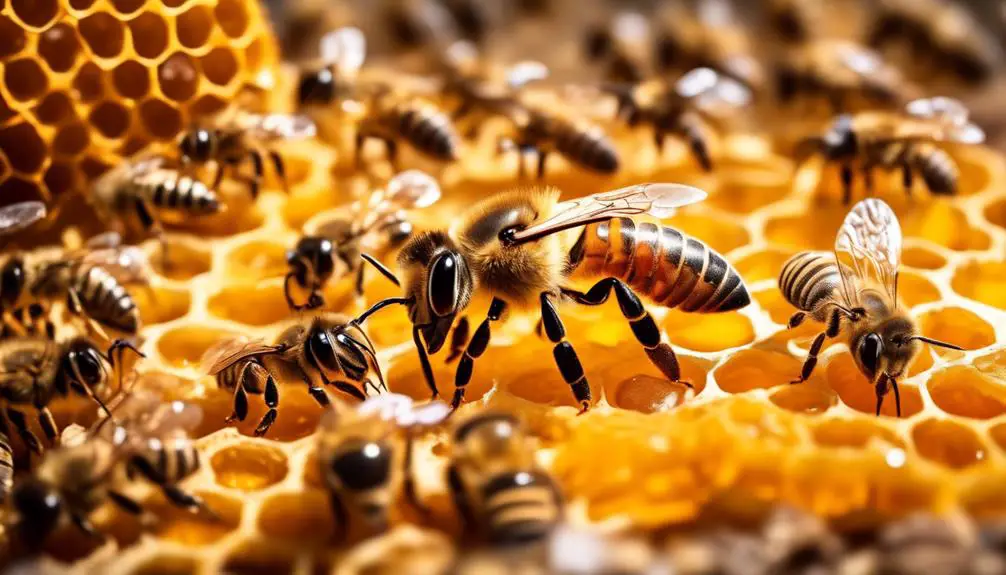
Shifting our attention from Europe to Africa, let's explore the intriguing characteristics of the African Honey Bee, scientifically known as Apis mellifera scutellata. You'll find these bees to be quite unique; they're more aggressive than their European counterparts and are known for their defensive behavior.
What sets them apart? It's their uncanny ability to thrive in tropical climates, their rapid colony growth, and their propensity to migrate as a response to adverse conditions. These traits have allowed them to spread across the globe, introducing a new dynamic to areas where they've established colonies.
To better understand these bees, consider the table below:
Characteristic | African Honey Bee | European Honey Bee |
|---|---|---|
Temperament | Aggressive | Docile |
Climate Adaptability | Tropical | Temperate |
Colony Growth | Rapid | Moderate |
Migration Pattern | Frequent | Rare |
The Intriguing Asian Honey Bee
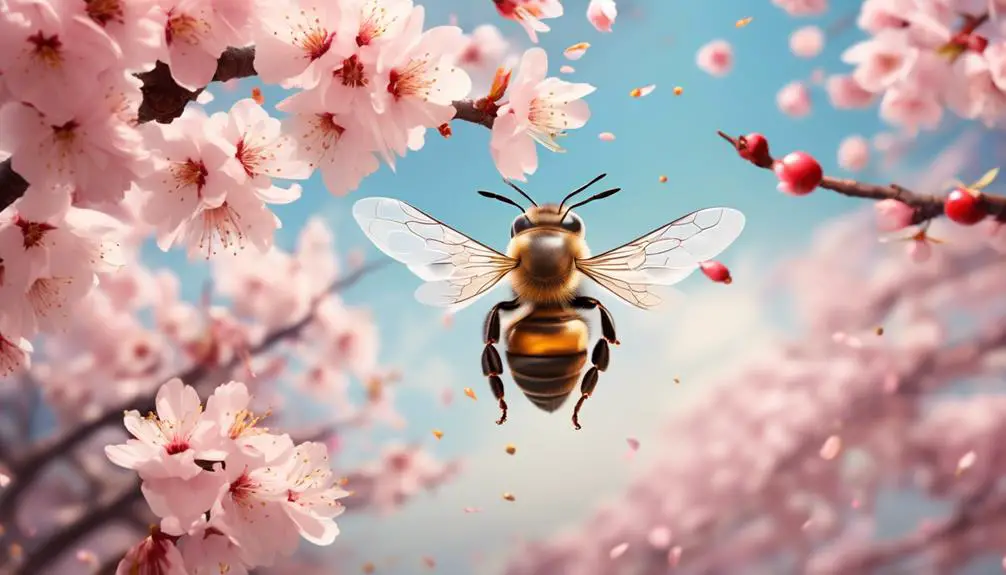
Let's turn our gaze towards the East to delve into the fascinating world of the Asian Honey Bee, scientifically known as Apis cerana, a bee species that's as intriguing as it's industrious. You'll find these bees buzzing throughout Asia, from the cold Himalayan heights to the steamy tropical forests.
Unlike their European counterparts, Apis cerana bees have evolved unique strategies to survive in their diverse environments. They're adept at coping with erratic weather patterns, and are known for their resourceful foraging tactics during scarce nectar seasons. They're not just survivors, they're innovators.
These bees also exhibit a unique social structure. They're known to be less aggressive and more cooperative compared to other honey bees. They've even developed a defense mechanism against the dreaded Varroa mite, a parasite that decimates bee colonies worldwide.
The Asian Honey Bee's honey production is smaller scale, yet their honey is prized for its distinctive taste and health benefits. It's worth noting that they're a key pollinator species in their habitats, playing an instrumental role in maintaining biodiversity.
Comparing Different Honey Bee Species

Building on our understanding of the intriguing Asian Honey Bee, it's fascinating to embark on a comparative study of different honey bee species to grasp the extensive diversity and unique adaptations within the Apis genus. Let's look at three types: the Western Honey Bee, the Eastern Honey Bee, and the Dwarf Honey Bee.
In their unique ways, these species offer insight into the richness of the honey bee world. They each have different behaviors, physical characteristics, and environmental preferences.
Below is a comparative table, which gives a quick glance at the characteristics of these three honey bee species:
Species | Unique Characteristics |
|---|---|
Western Honey Bee | Known for its high honey production and extensive use in commercial beekeeping. |
Eastern Honey Bee | Adapts to diverse climates and has a high resistance to diseases. |
Dwarf Honey Bee | Its small size and open-nesting behavior make it unique among honey bees. |
Conclusion
In conclusion, you've learned that honey bees aren't all the same. From the gentle European Honey Bee to the aggressive African Honey Bee, and the fascinating Asian Honey Bee, each species has unique traits. Understanding these differences is crucial for effective beekeeping and conservation efforts.
So, next time you savor a spoonful of honey, remember the diverse and industrious honey bees that produced it. It's truly a testament to nature's amazing variety.

